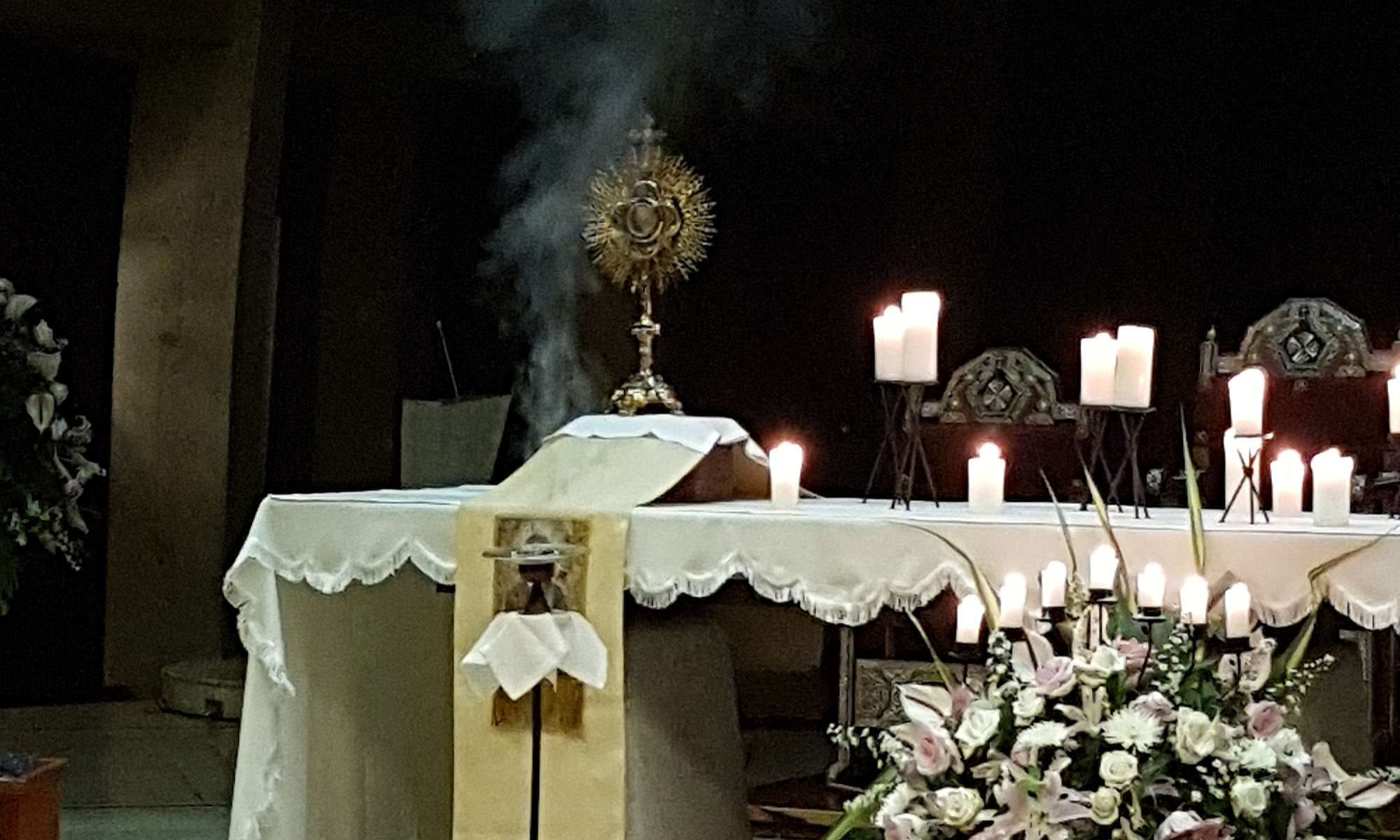 One of the most suggestive approaches to the mystery of the Blessed Virgin’s sorrow at the foot of the cross is the one that sees her in the very process of giving birth to the Whole Christ, that is, the very Body in which each one of us partakes. Let us see more closely what this could entail for it clearly gives a new and most profound meaning to the plea, “Pray for us, sinners,” that we say in every Hail Mary.
One of the most suggestive approaches to the mystery of the Blessed Virgin’s sorrow at the foot of the cross is the one that sees her in the very process of giving birth to the Whole Christ, that is, the very Body in which each one of us partakes. Let us see more closely what this could entail for it clearly gives a new and most profound meaning to the plea, “Pray for us, sinners,” that we say in every Hail Mary.
Sin is the very cause of Christ’s suffering; sin is at the root of all the pain inflicted to his innocent body and his spotless soul. As we recognise that we are sinners, we humbly admit that the conjoined effect of our faults has overburdened Christ’s shoulders and has caused the scandalous shedding of his blood. The gruesome spectacle of so much blood is like a dead-end; it is the confirmation of the hideous nature of our deeds.
Still, something unexpected occurs happens at this point. The brutal shedding becomes a stream of forgiveness and utmost compassion. It is true that violence was used to make this blood appear, but it is not violence that accompanies the steady flowing that interweaves with psalms, prayers and blessings coming out from the mouth of the pious Victim. The stream of prayer goes along the stream of blood, and the wounds caused by rage remain open by virtue of sublime love. Hence, what had to be a dead-end is thus transformed into a new beginning, a fresh start not only for the Risen Lord but also for all who believe in this most astounding display of grace and divine power.
The Passion of Christ stands as the real commencement of the new creation. He is called several times “the First-born” in the New Testament and a particular passage from the Letter to the Romans elaborates a little more: “And we know that to them that love God all things work together for good, even to them that are called according to his purpose. For whom he foreknew, he also foreordained to be conformed to the image of his Son, that he might be the firstborn among many brethren: and whom he foreordained, them he also called: and whom he called, them he also justified: and whom he justified, them he also glorified.” (Rom 8:28-30)
It is possible then to speak of our redemption in terms of a new birth, and it is here that the role of the Blessed Virgin, who stood at the foot of the Cross, becomes so relevant. Love does not know idleness. She is not paralysed by fear, hatred or even sorrow. Christ addressed her in a way that presumes a clear understanding of what is going on. She is not absent—perhaps sunk in despair—but incredibly present, sharing in a unique way the cruelty but also the fecundity of those precious hours.
In the passage of the Annunciation we get a glimpse of Mary’s soul. She is the one that regards herself as the Lord’s handmaid (Luke 1:38). She is the one that later rejoices because God “has looked favourably on his humble servant.” (Luke 1: 48). She is also the one that taught the servants in Cana: “Do whatever he tells you.” (John 2:5) Essentially everything we can gather from the Scripture regarding the Blessed Virgin’s way of leading her life is: fulfilling God’s will. There is no reason to think it was other wise at the time of the Passion of her Son. In the midst of so much sorrow, she is the one that above all has chosen to fulfil whatever God may want.
This most intimate union with God’s plan and purpose made her join her heart to the heart of her Son, and with no doubt made her join his prayers and intentions with those of the Crucified Lord. The deepest consequences of her unique call to be the Mother of Christ then emerged: She cannot love him without loving the fruit and result of his entire life and mission. She is simply bound to love and cherish the new creation with a love that is inseparable from the love she has for her only Son.
That is why the Church has called her with titles of sublime beauty and content, like Mediatrix and Co-redemptrix—which allows us to finish with the words of the Second Vatican Council: “This motherhood of Mary in the economy of grace lasts without interruption, from the consent which she gave in faith at the annunciation, and which she unhesitatingly bore with under the cross, even to the perpetual consummation of all the elect. For after being assumed into heaven, she has not put aside this saving function, but by her manifold intercession, she continues to win the gifts of eternal salvation for us. By her motherly love, she takes care of the brothers of her Son who are still in pilgrimage and in dangers and difficulties, until they be led through to the happy fatherland.” (Lumen Gentium, 62).
